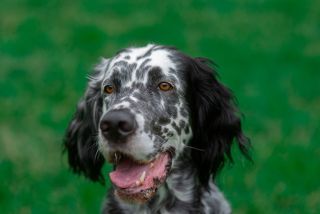Social Media
Only Use Images of Healthy Dogs in Adverts, Say Experts
Advertisers should avoid showing dogs with extreme body shape, new guidelines say.
Posted July 16, 2024 Reviewed by Margaret Foley
Key points
- Advertisers often use dogs with an extreme body shape in their adverts, which helps popularize those breeds.
- New guidelines recommend avoiding breeds with conformation issues in advertising.
- The guidelines are aimed at improving dog welfare.
For a while now, concern about the health and welfare of certain dog breeds has been growing. In particular, the ill health and breathing issues of flat-faced (brachycephalic) dogs have been described as an animal welfare crisis. But some of these breeds are commonly used in advertising and other public communications materials—and that’s a problem, according to the International Collaborative on Extreme Conformation in Dogs (ICECDogs), who say it helps to popularize these breeds.
ICECDogs have just released new guidelines for advertising and social media that recommend avoiding the use of images or film of any dogs with an extreme physical appearance. The guidelines are aimed not just at advertising agencies but anyone who publishes images of dogs, including film companies, social media influencers, and greeting card manufacturers.
Concerns about conformation
When we say that a dog’s conformation (or physical appearance) is extreme, it means that over time, selective breeding to create and maintain dog breeds has changed the dog’s appearance so that it has become very different from a more natural type of dog. Although dogs have lived with or around people for thousands of years, most dog breeds were created in the last 150 years, especially in Victorian England. These changes give each breed a distinctive appearance, but in some cases, unfortunately, the breed has ended up with an extreme look that is linked to health issues.

Some flat-faced dog breeds are very popular. The French Bulldog was the most popular dog breed in the United States in 2023, the fourth-most popular in Canada, and the second-most popular breed of dog in the UK. So it’s not surprising that these dogs are also popular amongst advertisers, who want to draw attention to their product and generate a cute or cuddly emotional reaction from their audience.
But the use of dog breeds with welfare issues in adverts, on social media, or in other public communication helps to make the conformation of those dogs appear normal when it is not. And that’s the main concern behind these guidelines.
The aim of the guidelines
Dr Dan O’Neill, Chair of the UK Brachycephalic Working Group, Associate Professor for Companion Animal Epidemiology at the Royal Veterinary College, London, and co-founding ICECDogs member, said:
“Millions of dogs continue to suffer worldwide every year from extreme and unnecessary body shapes. This new ICECDogs message calls on advertisers to play their part in ending the normalisation of suffering from extreme body shapes and will hopefully contribute to the ongoing worldwide movement to instead celebrate healthy body shapes in dogs.”
These guidelines are aimed purely at improving dog welfare. However, following them may have benefits for advertisers and other publishers beyond the warm feeling of knowing they are promoting good dog welfare. There are 200 dog breeds registered by the Kennel Club, so there are plenty to choose from, and choosing different breeds might help advertisers to have more unique and memorable advertising. Some advertisers might even choose to champion a breed that is healthy but considered ”at risk” of disappearing due to low numbers, which may encourage more people to show interest in that breed and help with its survival.
The breeds of dog covered by the guidelines
The guidelines are based on research on the welfare of different dog breeds, including studies conducted by Dr. Dan O’Neill and his colleagues at the Royal Veterinary College in London, England. For example, one of those studies used data from a very large dataset called VetCompass to study the lifespan of 150 dog breeds. The results showed that dogs with flat faces often have short lifespans, especially if they are medium or large breeds (McMillan et al. 2024).
Flat-faced dogs are at risk of various health issues including Brachycephalic Obstructive Airway Syndrome, which means they struggle to breathe (Packer and O’Neill 2021). However, the dog’s guardian often does not realize, even when they hear the dog snorting, snoring, and wheezing, because they think it is “normal for the breed.” It’s an example of how this particular extreme conformation has become normalized.
While we typically think of flat-faced dogs when we’re talking about an extreme conformation, there are other ways in which dogs can have an extreme body shape. This includes extreme folds on the dog’s face or body, large eyes that protrude from the face, eyelids being turned in or out, the jaw being under- or overshot, having a head and shoulders that are disproportionately large, or having shortened and twisted legs. Another example of extreme conformation is being born without a tail, which is an issue because the lack of a tail affects the dog’s ability to communicate.
Breeds that often show an extreme conformation, according to ICECDogs, are:
- Bassett Hound
- Boston Terrier
- Dachshund
- English Bulldog
- French Bulldog
- German Shepherd Dog
- Neapolitan Mastiff
- Pekingese
- Pug
- Shar Pei
- Welsh Corgi
The thing is that these dogs don’t always have an extreme conformation, but very often they do. There are plenty of images of dogs to choose from, so if in doubt, ICECDogs suggests advertisers pick an image where it is very clear that the dog has good welfare, saying,
“...it is safer to find alternatives that show natural dogs without extreme conformation to help promote positive welfare in dogs.”
There is an exception when they say it is OK to use images of these dogs. That is when the reason is to promote good welfare for dogs, such as using these images to illustrate the harms caused by extreme conformation.
The hope is that over time the conformation of dogs will change to be more healthy and that ultimately guidelines like this will no longer be needed. In the meantime, the aim is to help reduce demand for this type of dog in order to reduce suffering.
References
ICECDogs position statement April 9, 2024. Reducing the negative impacts of extreme conformations on dog health and welfare. https://www.icecdogs.com/home/position-statements
McMillan, K.M., Bielby, J., Williams, C.L. et al. Longevity of companion dog breeds: those at risk from early death. Sci Rep 14, 531 (2024).
Packer, R. and O’Neill, D. (2021). Health and welfare of brachycephalic (flat-faced) companion animals: A complete guide for veterinary and animal professionals. CRC Press.




